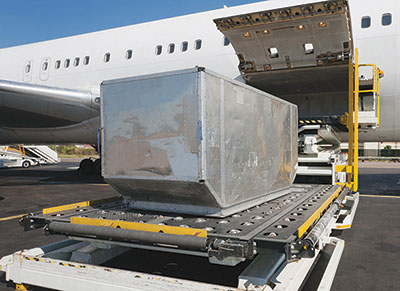Improved freight forwarding market has little impact on rates, says new report
According to the new Global Freight Forwarding 2017 report, compiled by the London-based think tank, Transport Intelligence (Ti), not all of the news is great, however.

Logistics industry analysts report that the global freight forwarding market has grown by 2.7% in real terms this past year, an annual jump of 2.1% led by the back of higher air and sea volume growth.
According to the new Global Freight Forwarding 2017 report, compiled by the London-based think tank, Transport Intelligence (Ti), not all of the news is great, however.
Thanks to a continuation of excess capacity issues and lower average oil prices in 2016, rates continued to fall in both air and sea freight, meaning most forwarders reported lower year-on-year revenues.
“While air and sea volume growth picked up a bit in 2016, most forwarders experienced declining revenues on the back of substantial rate declines,” says Ti cconomist, David Buckby. “As usual in such circumstances, the fall in forwarder sell rates did not match the drop in their buy rates, leading to improved gross profit margins.
Over the medium term, Buckby expect sgrowth to pick up in line with higher global trade volume forecasts, though risks are tilted to the downside due to factors such as political uncertainty and trade protectionism.
“Real growth in the air and sea freight forwarding markets was remarkably similar globally, but this disguises significant differences across important countries and regions,” he added.
For example, air freight forwarding growth in China is thought to have been robust, while sea freight growth was much weaker. Conversely, the United States saw moderate expansion in sea freight as air freight growth faltered.
Looking ahead, the market is anticipated to grow at a real 2016 to 2020 compound annual growth rate (CAGR) of 4.1%, as global trade volume growth accelerates.
Brandon Fried, executive director, Air Forwarders Association (AfA), told LM in an interview that while air cargo volumes have increased, margins remain depressed and most of AfA members are looking forward to opportunities in which profitability may improve.
“One influencing factor to consider is the growth of capacity we have seen over the past couple of years, keeping pricing at lower levels,” he said. “This increase in space is attributable to the large amount of new and efficient wide-body aircraft, each with generous belly space flying the popular trade lanes.”
Another significant factor inhibiting this growth, in many cases lies with lower customer pricing agreements that may no longer reflect today's market conditions. Once these contracts expire, prices and margin should improve overall.
“However, new transport pricing agreements alone will not assure increased profitability and this is why forwarders must be searching for more operational efficiencies that only technology can provide,” said Fried. “People still play a crucial role in our business but technology will help them work smarter and provide an improved customer experience.”
See the recent list of Top 25 Frieght Forwarders from Logistics Management

Article Topics
News & Resources
Latest in Materials Handling
Beckhoff USA opens new office in Austin, Texas Manhattan Associates selects TeamViewer as partner for warehouse vision picking ASME Foundation wins grant for technical workforce development The (Not So) Secret Weapons: How Key Cabinets and Asset Management Lockers Are Changing Supply Chain Operations MODEX C-Suite Interview with Harold Vanasse: The perfect blend of automation and sustainability Consultant and industry leader John M. Hill passes on at age 86 Registration open for Pack Expo International 2024 More Materials HandlingAbout the Author
Subscribe to Materials Handling Magazine

Find out what the world's most innovative companies are doing to improve productivity in their plants and distribution centers.
Start your FREE subscription today.
April 2024 Modern Materials Handling

Latest Resources










